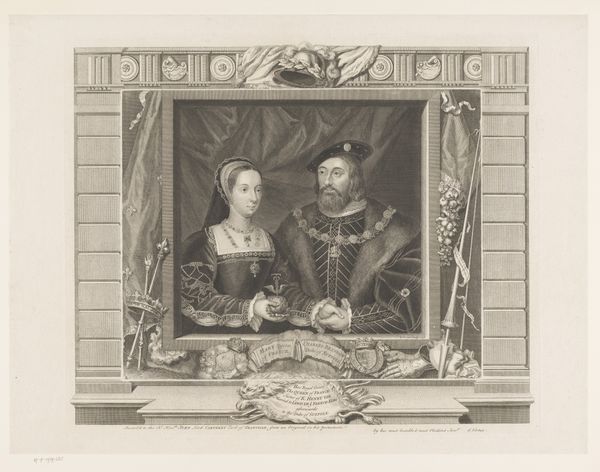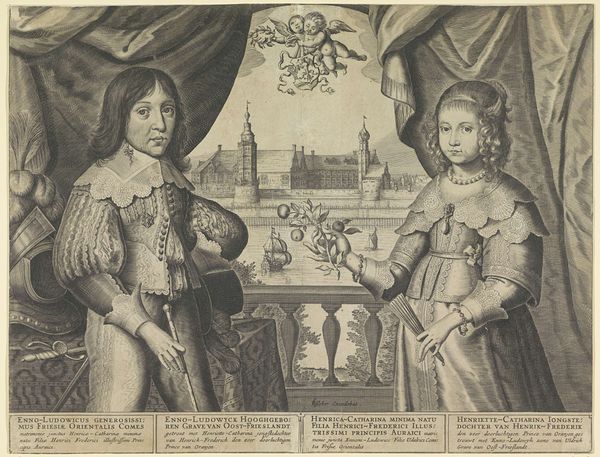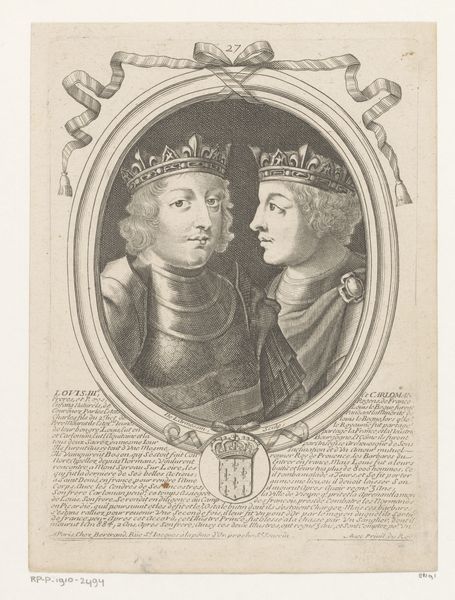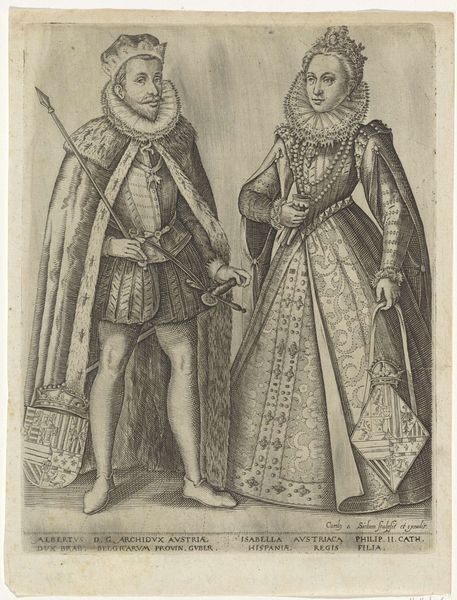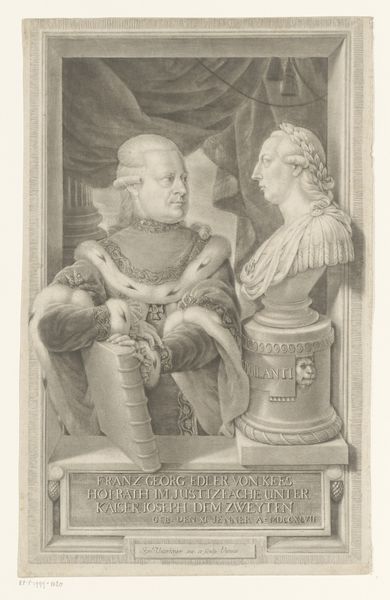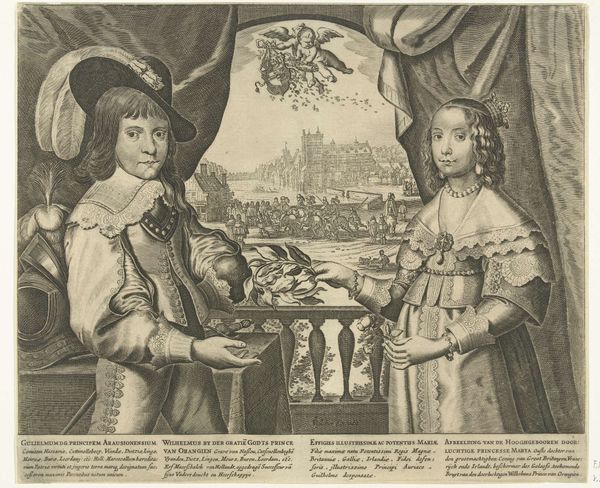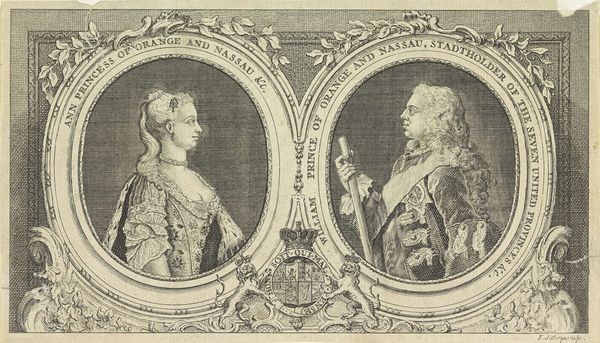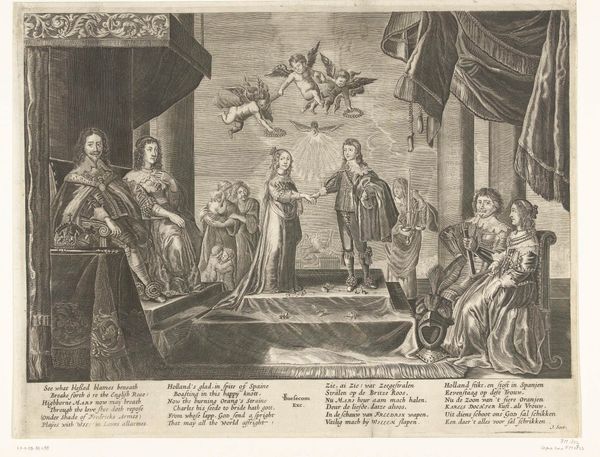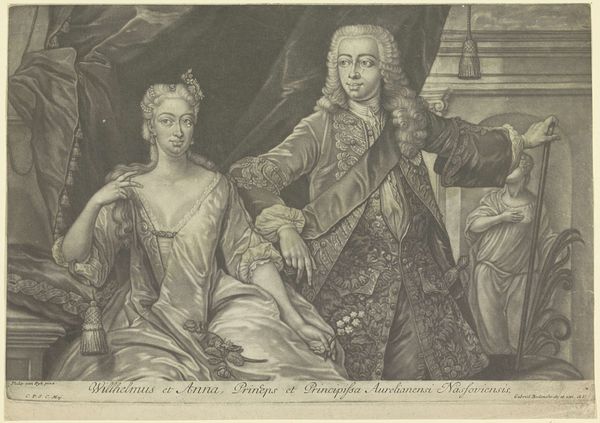
paper, engraving
#
portrait
#
baroque
#
paper
#
historical photography
#
history-painting
#
engraving
Dimensions: height 468 mm, width 563 mm
Copyright: Rijks Museum: Open Domain
George Vertue created this engraving, a portrait of Mary Fiennes and her son Gregory, sometime before 1756. The lines you see aren’t drawn, but incised into a metal plate, likely copper, with a tool called a burin. Think of it: each line a deliberate cut, the density of cross-hatching building up shadows and textures. This wasn't a quick sketch, but a labor-intensive process demanding precision and control. Engraving has a fascinating social history. While artists like Albrecht Dürer elevated it to high art in the 16th century, it also became a crucial technology for mass production. Prints like this one circulated widely, spreading images and ideas. Notice how Vertue meticulously renders the fabrics and jewels, broadcasting the wealth and status of his subjects. Yet, the very act of creating this image involves a kind of labor, a skilled craft that often goes unacknowledged when we focus solely on the portrait's subject. By considering the material and the making, we can see this print not just as a representation of nobility, but as a product of social and economic forces.
Comments
No comments
Be the first to comment and join the conversation on the ultimate creative platform.
